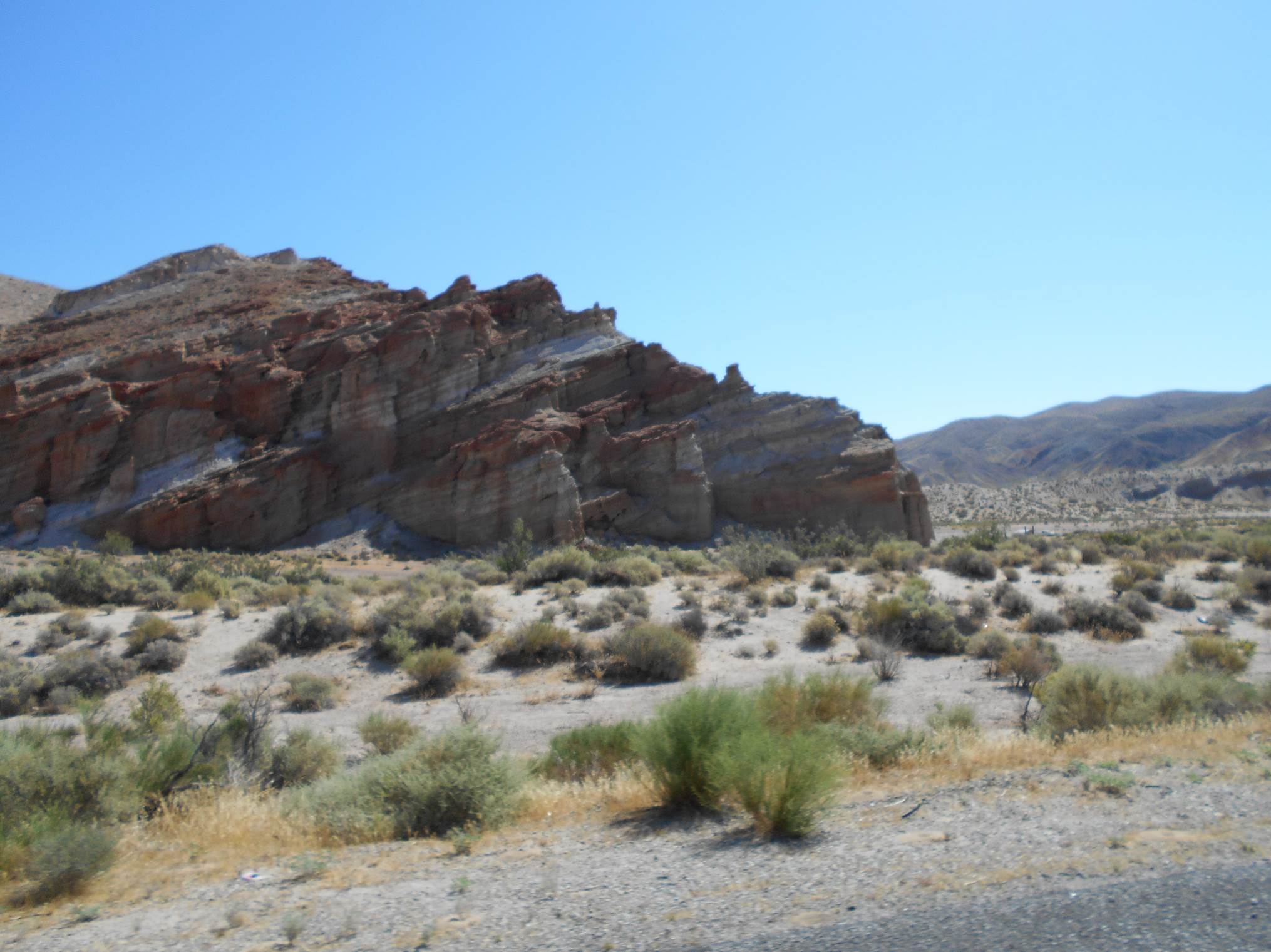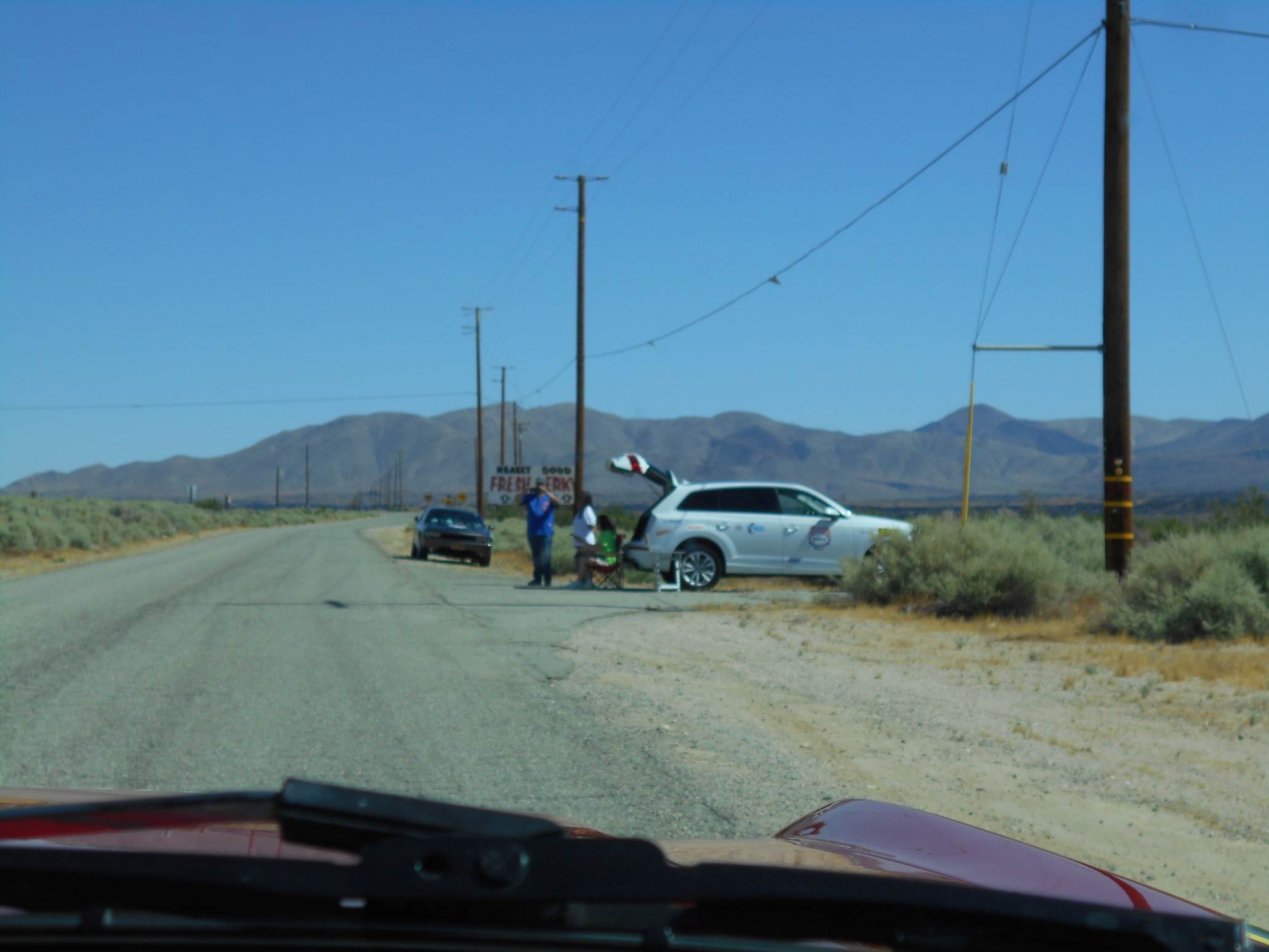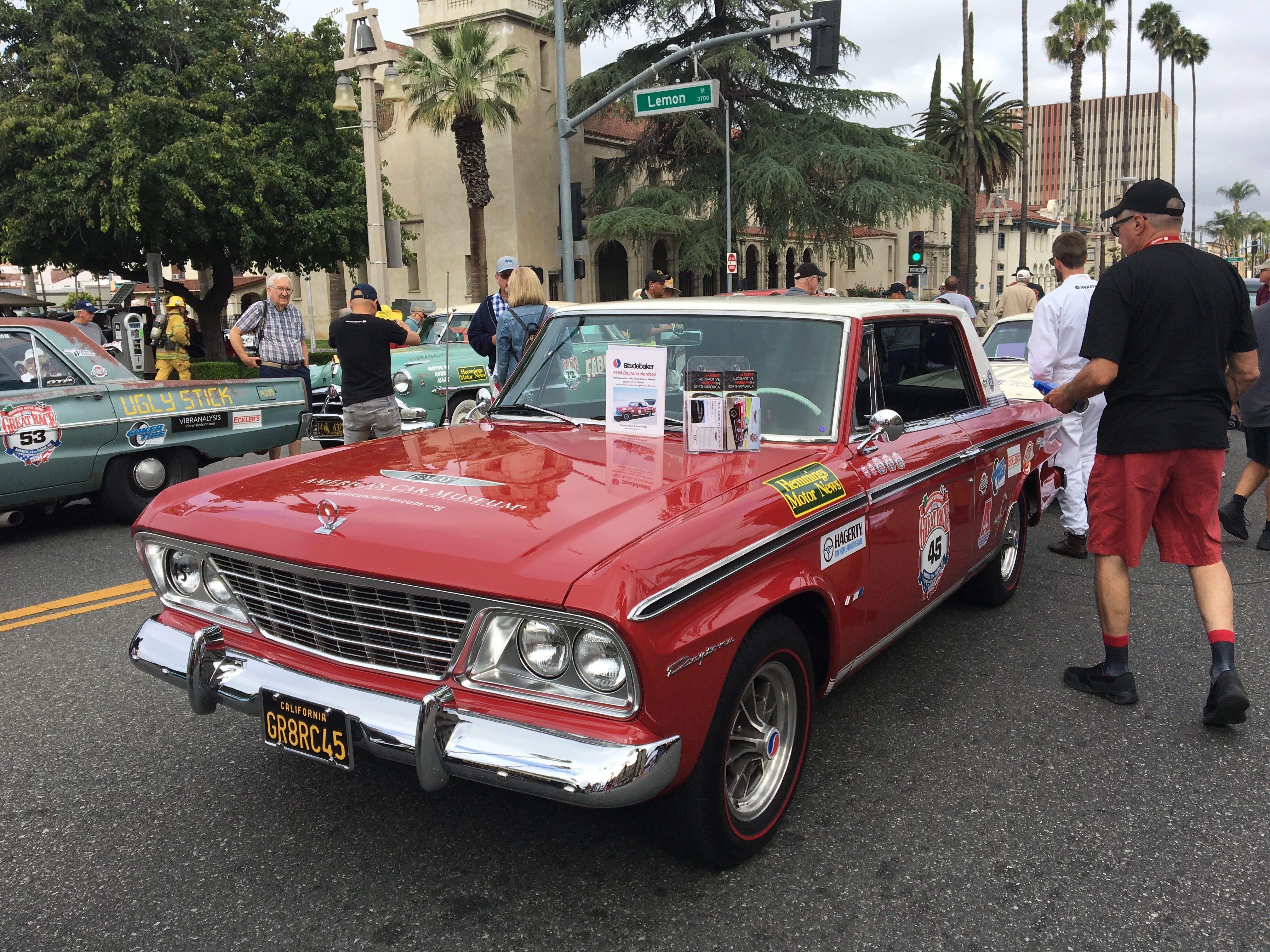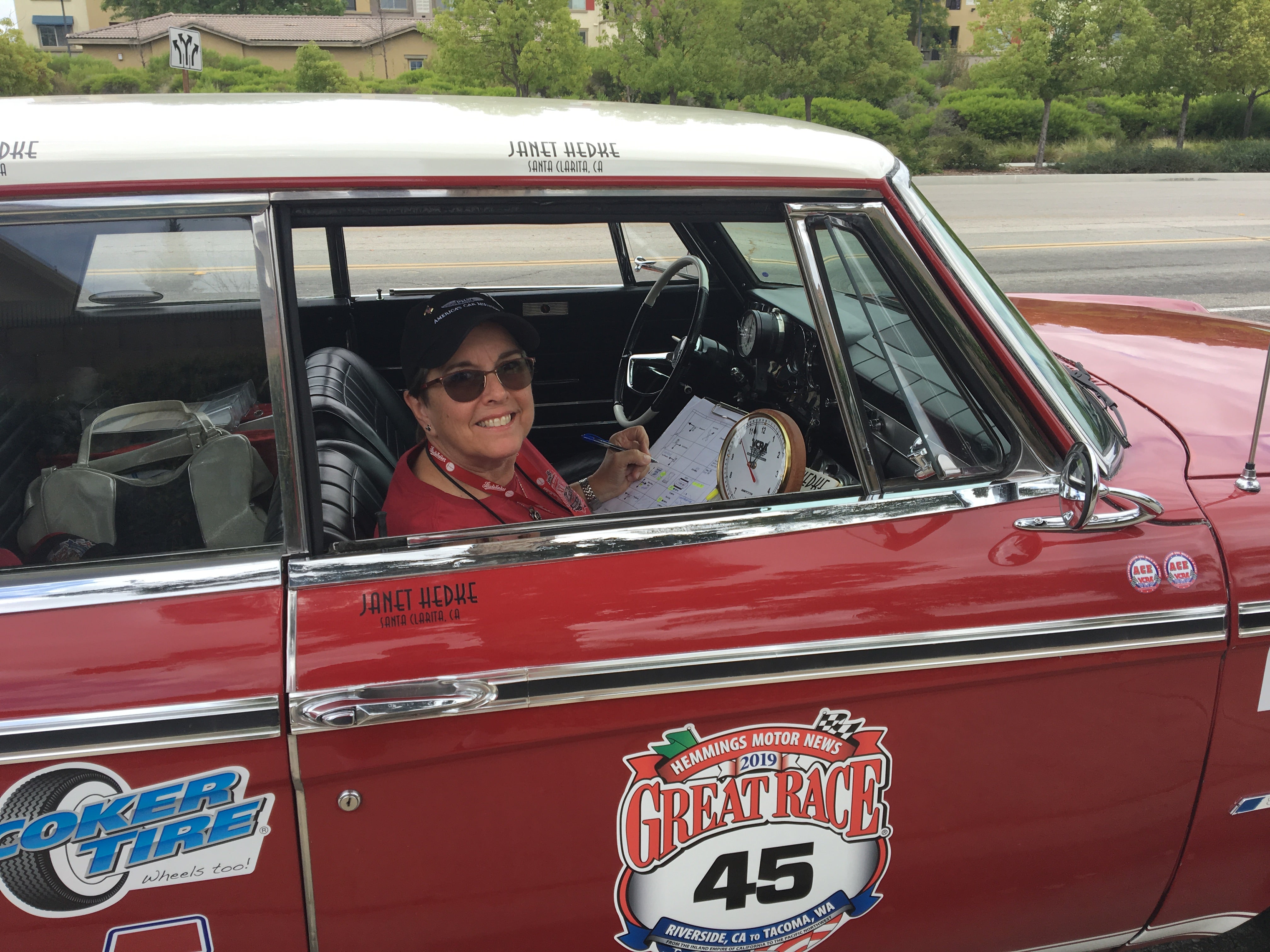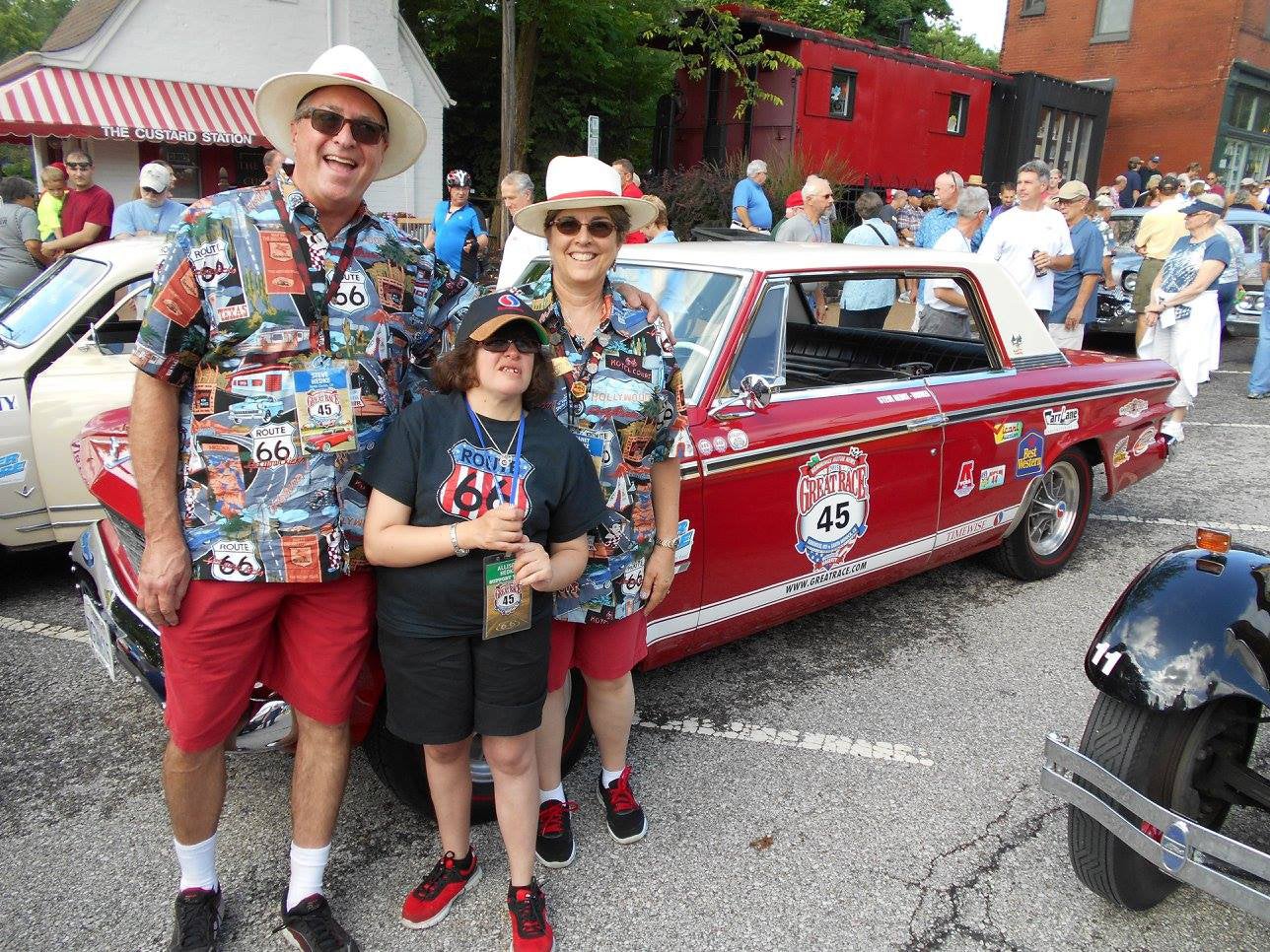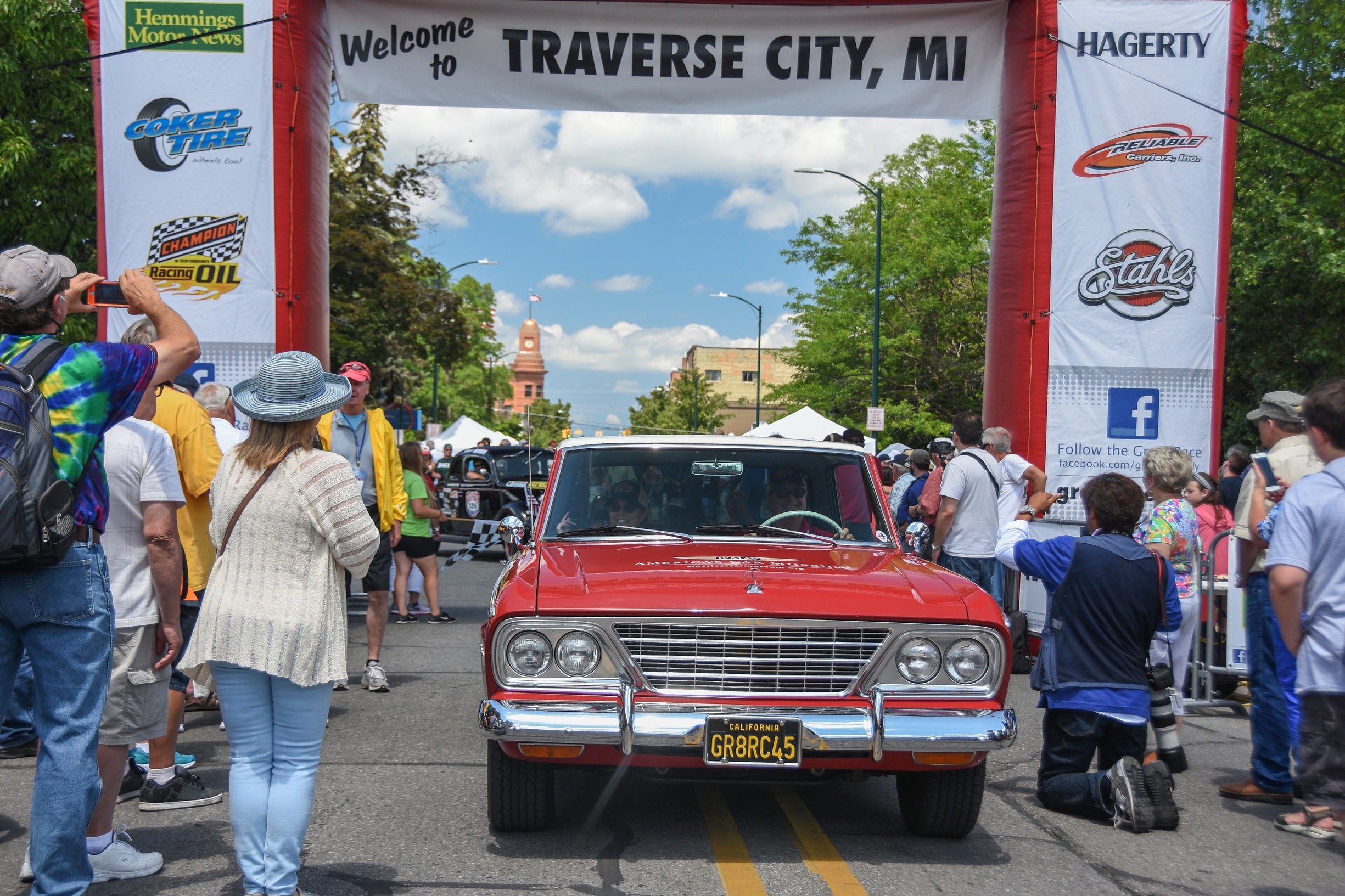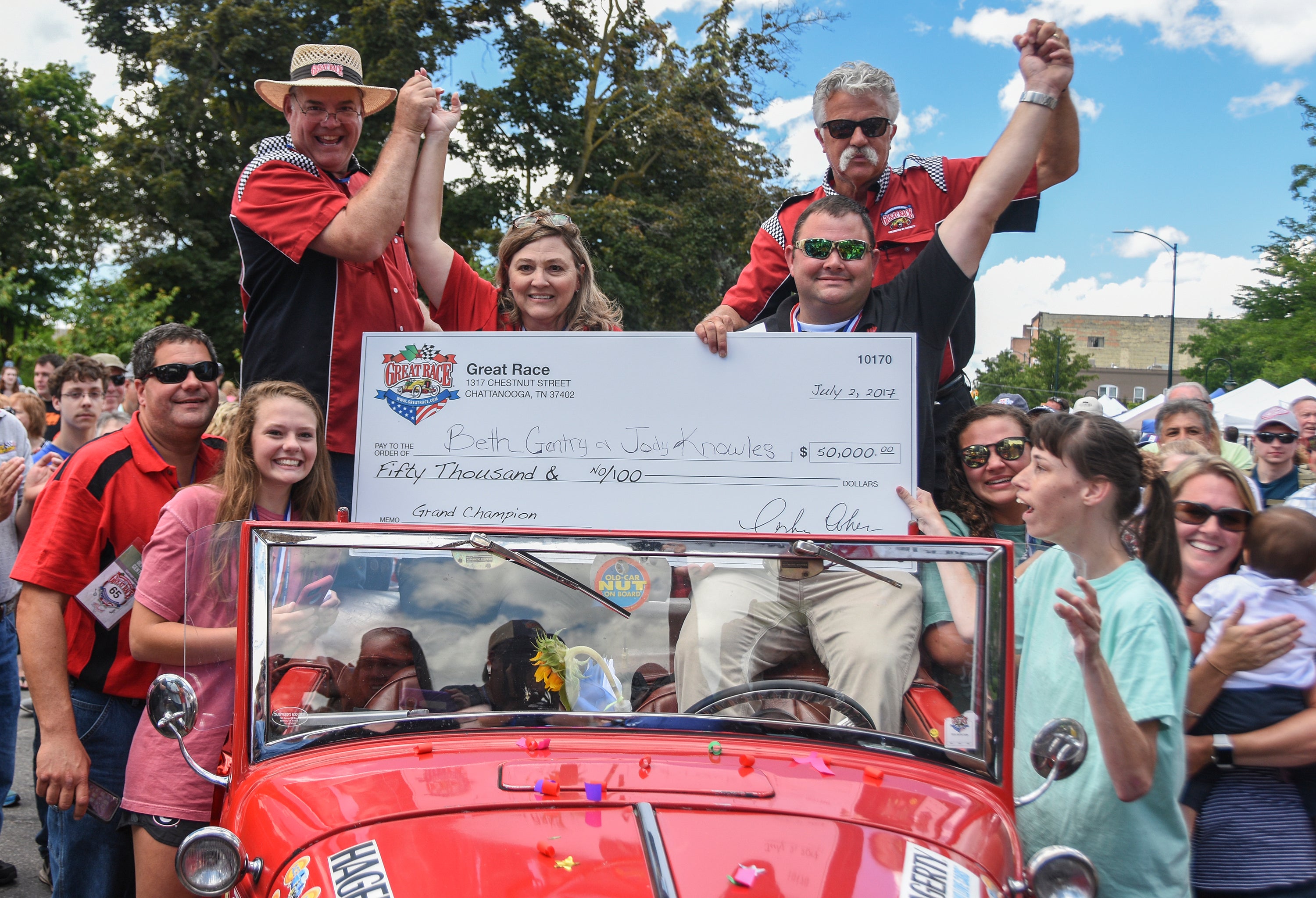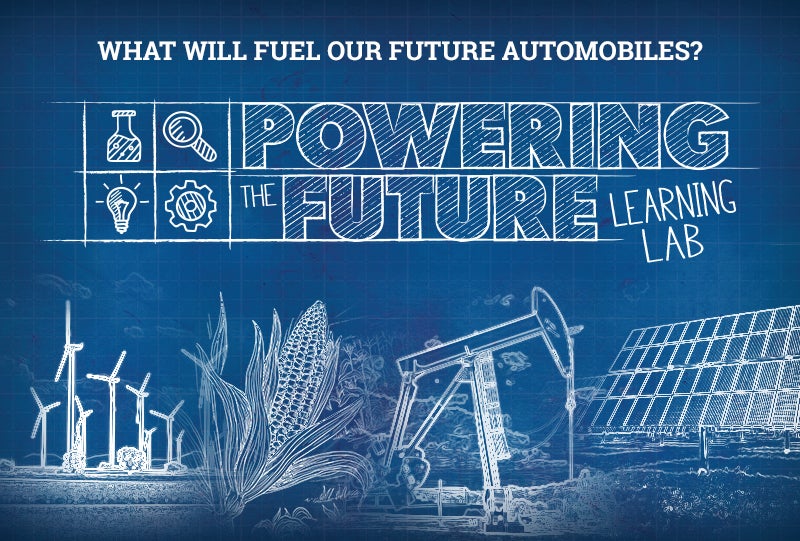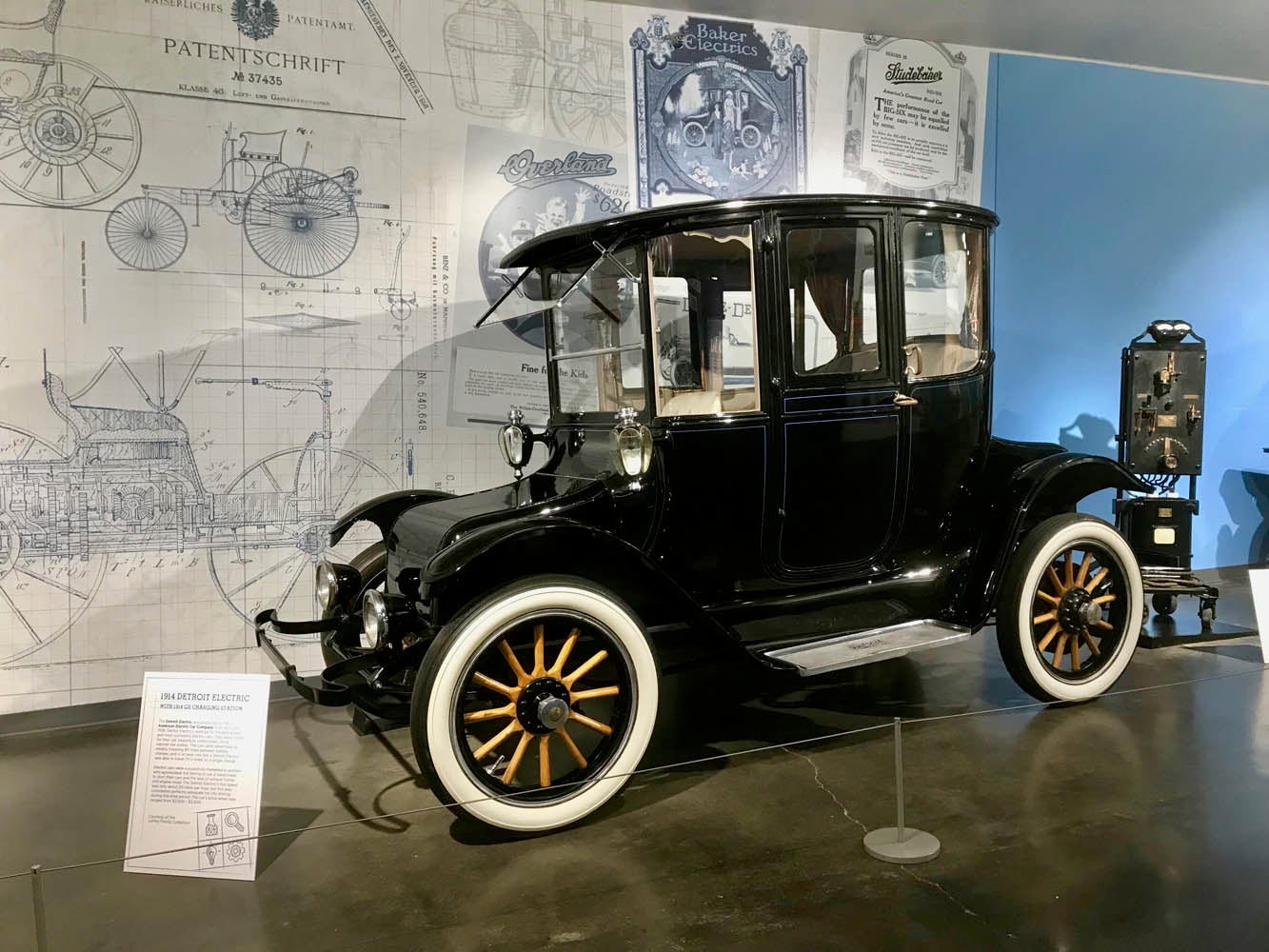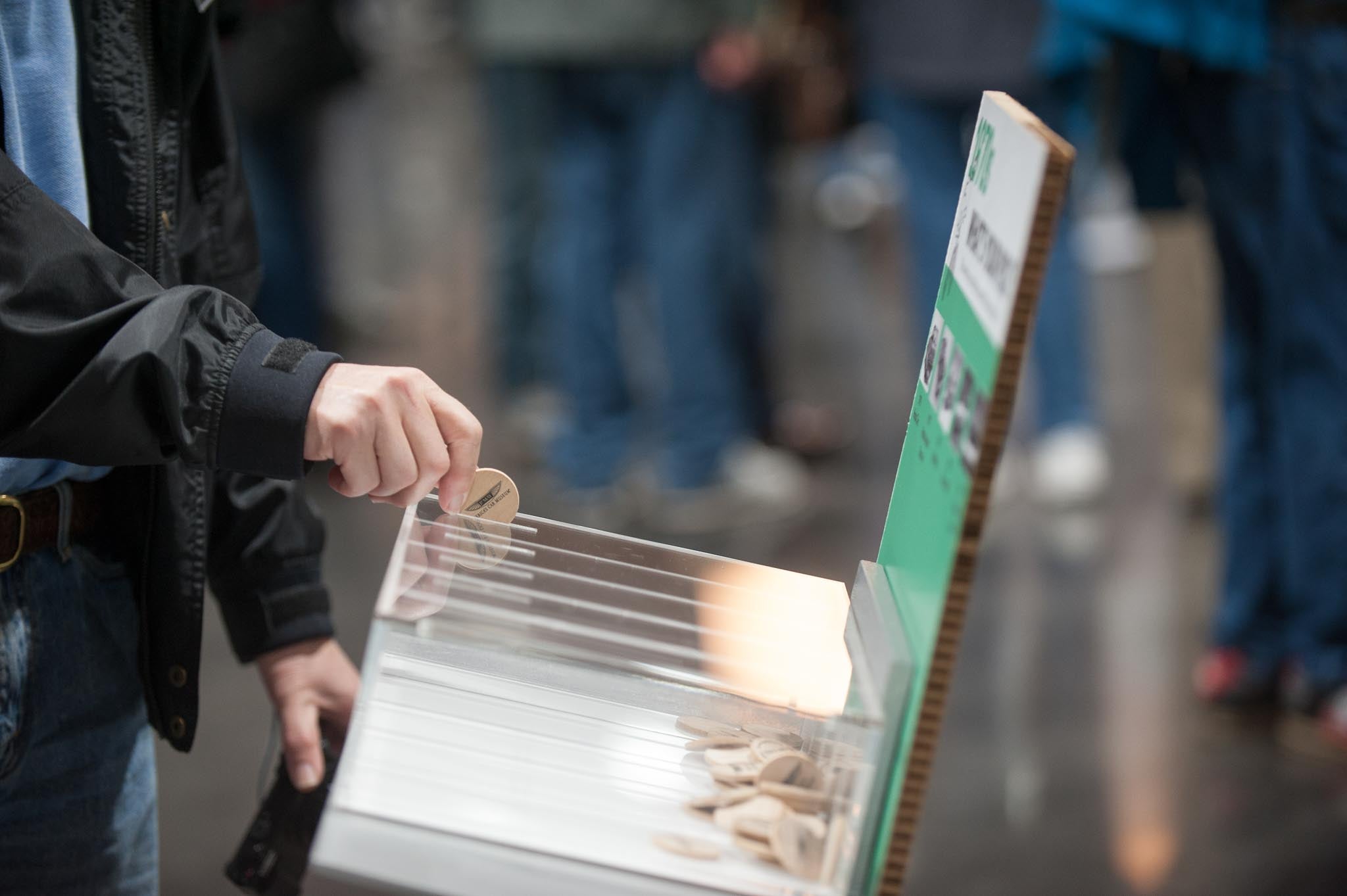
By Steve Hedke, who is representing LeMay – America’s Car Museum with his wife Janet and their daughter Allison in the Great Race
Another great day rallying and another day where road conditions held some surprises for the field. We pulled a very early number (#3) for today’s stage, which had a 7:30 am start time. Which meant I picked up instructions at 7:03 am. Backing everything up to have breakfast before we left our hotel to drive to the hotel where they handed out route instructions, it was a VERY early alarm!
After the usual tire warmup and speedometer calibration through central California farmland, we had two legs of stops, turns and speed changes, a lovely hour-long transit that took us along the shore of Clear Lake, and another short leg before lunch. When we arrived at the lunch stop in Willits, we were told there was some police activity behind us on the route and they closed the road and re-routed the field. So, the first two legs ended up being thrown out. Well, it was good practice anyway.
Another nice lunch stop with a great crowd in a shady park and we had another hour-long transit to our afternoon leg, which was all of 18 minutes. It wasn’t without excitement though. We were about two minutes from the end and there was a flagman in the road (again!) holding a stop sign. We stopped under control, calculated our time loss at 50 seconds, and crossed the checkpoint exactly 10 seconds ahead of the car behind us.
The short afternoon was so we could take advantage of the unique tourist offerings in the area for the benefit of racers who come not only from all over the country, but from several international locations including Japan, Canada and the UK. First we stopped in Leggett at the Drive-Thru Tree Park, where those who had cars small enough could drive through the cut-out redwood tree. After we all got an official photo taken by the Great Race photographer, we drove along the Avenue of the Giants redwood forest on our way to our overnight stop in Eureka.

When we arrived in Eureka, with the two legs tossed out there were only three remaining. We had a one-second score on each leg for a total of :03 for the day. We were thrilled, but knew there would likely be other teams with the same or better score. When there is a tie, the older car wins. Since we have a newer car, we are used to being “old-car’d”.

Looking at tonight’s scores on the Great Race site, that is indeed what happened. We came in third for the day (second in Expert division) and are now up to 6th place overall with another of our previous high scores having been dropped. We are still fourth in Expert.
We are seeing some excessive tire wear on the front; could be that one of those rough roads knocked the alignment out. We will see if we can get to a tire store after tomorrow’s finish.
Tomorrow’s course will take us to Oregon and more spectacular scenery as Team LeMay – America’s Car Museum heads to the Grand Finish at the Museum in Tacoma on Sunday!
Read More


